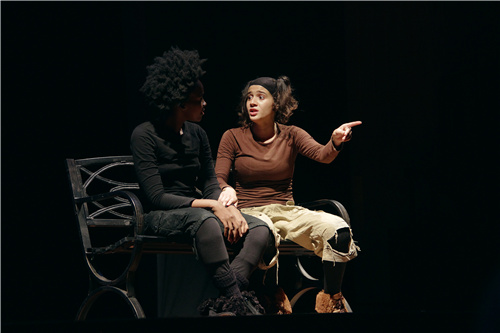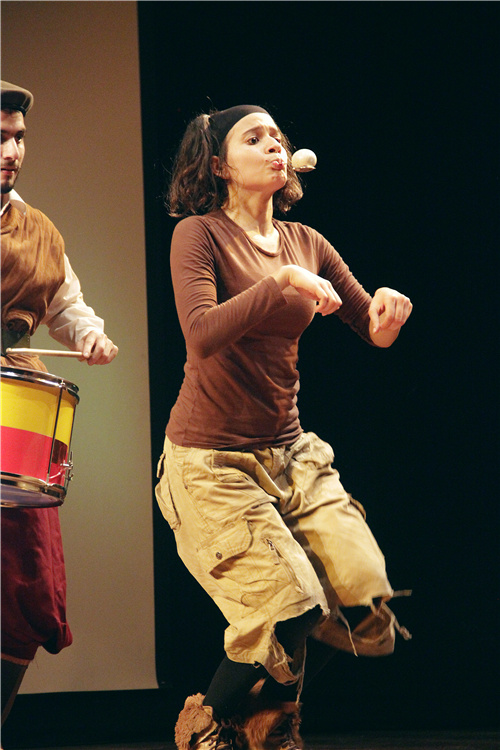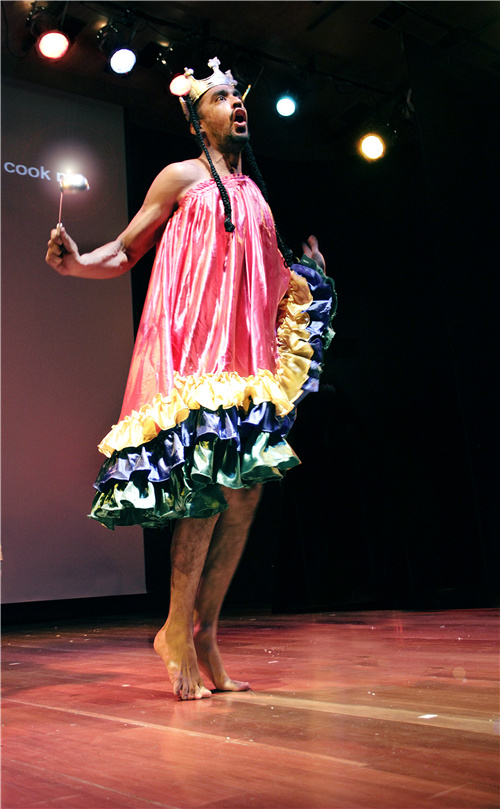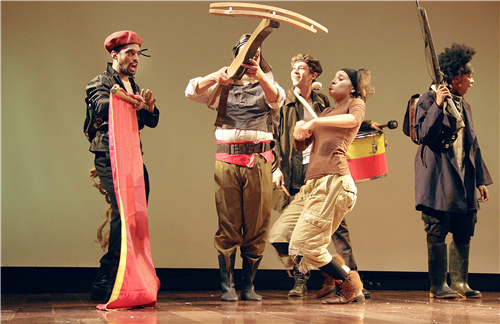
Director: Ma Zhenghong
Playwright: Miguel de Cervantes
Institution: Universidad del Valle - Colombia
Venue: Centro Cultural COMFANDI
Event: ATEC 9th International Forum

Director’s Notes
The influence of Cervantes in literature, art and the humanities is immeasurable; and The Dialogue in particular has a curious relationship with Sigmund Freud, the famous creator of the theory of psychoanalysis, who used Cipion as his first pseudonym in his correspondence. Freud considered this dialogue as an exceptional model of the relationship between therapist and patient; the viewer will notice how Cipion drives the story of Berganza, avoiding disintegration, distraction and blasphemy. Cipion manipulates time, keeps her fellow speaker calm, brings a literary and historical context to the confessions, and even atones for the sins of her friend. Our adaptation of The Dialogue of the Dogs favours this approach, understanding that Berganza is a dog confused by countless traumatic experiences suffered by her owners, and tries to understand the deepest contradictions of the human species.
With Cervantes we are confronted with material that is genuine, complex, and due to its length, impossible to adapt. We therefore made some important decisions: one of our stage devices was to limit the use of the word; the dialogue between Cipion and Berganza alternates with the creation of atmospheres and actions which facilitate the telling of the life of the main character with her different owners. These images are then discussed by the dogs, in a structure similar to that promoted by the composer Richard Wagner: what is expressed in the image is not told with words and vice versa. In each of the episodes we have taken interpretative liberties, altering the tales to adapt the stories to a visual language for fewer players. With costumes and stage design by the artist Pedro Ruiz, and original music by maestro Paulo Gutierrez, actors parade through countless characters, turning the staging into a versatile game.
The novel masterfully articulates several of Cervantes' obsessions: the difficult relationship between poets and actors, slang (or the life of the underworld), gypsies and the idealization of rural life. Berganza is a dog that is introduced to a number of activities such as commerce, justice, grazing, witchcraft and theatre. The novel has sceptical gaze par excellence that of Cervantes confronted with his century.

Synopsis
The Dialogue of the Dogs has a curious subject: the main characters are two dogs talking to each other. The testimony of this unusual dialogue reaches us thanks to a sick man who, shut away in a hospital, listens to the conversation between the dogs. The Dialogue becomes a stark but valuable ethical, religious, social and artistic portrait of the Spanish Baroque. Our adaptation includes a fragment from The Deceitful Marriage, a novel organically connected to The Dialogue. We have developed a meta-theatrical staging, starring two actresses who play the roles of Cipion and Berganza.


